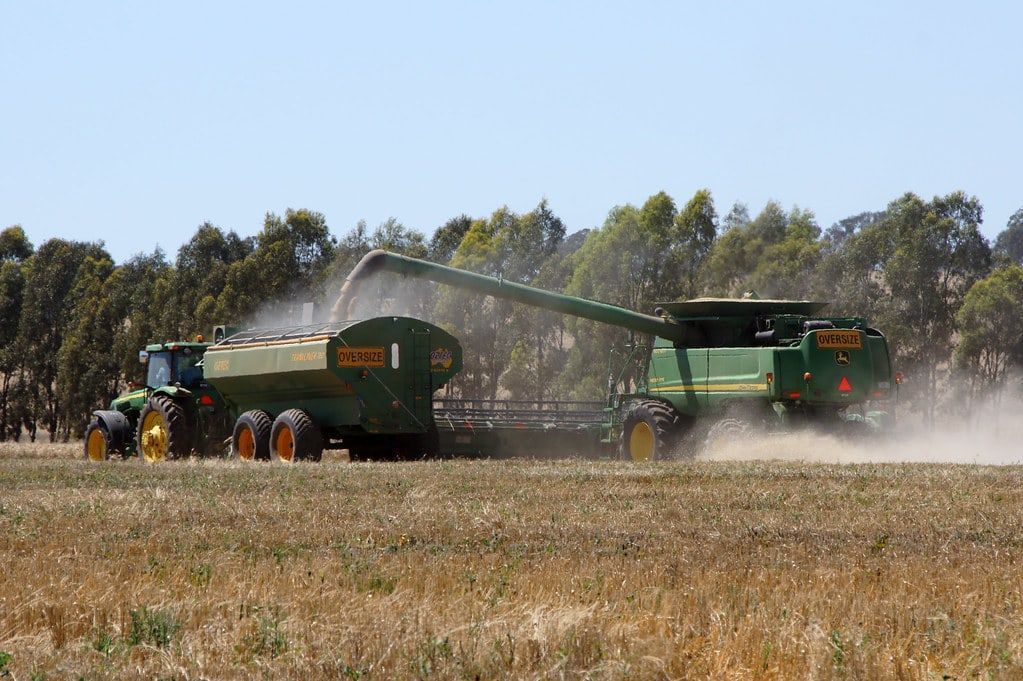News


ABARES has announced that the value of agricultural output is set to reach a record of $66 billion in the 2020-2021 financial year, a $5 billion increase on the record set in 2016-2017.
Favourable seasonal conditions are the main driver of the increase in production, outweighing the drawbacks of the COVID-19 virus and trade tensions with China. Australia’s national wheat yield broke the records, with the total winter crop almost the highest on record. Consumers paid more than 15% more for food last financial year, fuelled by the increasing prices for red meat.
Farm incomes were also up by 18% with broadacre grain and livestock farmers earning an average of $184,000 and $190,000 for dairy farmers. In New South Wales, farm cash incomes outperformed the 10-year average – a significant turnaround for a state that has suffered significant effects of the drought.
Aus Ag to Generate $60 billion Plus for the Next Five Years
While the record year has provided a well-needed boost to profitability and general optimism, ABARES has warned that agricultural performance will contract this year. Forecasts show that Australian agriculture will generate around $63.3 billion in the 2021-2022 financial year, and maintain a return of above $60 million across the next five years.
Among the factors is a drop in the national wheat yield, which is expected to be around 25 million tonnes, down from the record 33.3 million tonnes last harvest. As farmers continue to rebuild sheep and cattle herds after the drought, there is still a shortage of meat for sale. In addition, the widespread outbreak of African Swine Flu in China has seen pig numbers decimated, increasing demand for Australian lamb and beef.
“Shifting trade, along with macroeconomic and production uncertainties, will provide the backdrop for what we expect to be a more difficult environment in which to grow production and trade value,” said ABARES’ acting Executive Director, Jared Greenville.
Beef, wine and barley exports to China are also under threat as tensions between the two countries continue and tariffs are applied to more commodities.
ABARES Outlines Agricultural Megatrends for the Next Decade
In addition to the performance figures and forecasts, ABARES has released a report outlining the megatrends set to shape Australian agriculture over the next ten years. Dr Grenville said that the trends were being released to help inform all layers of agriculture.
“The article seeks to help farmers, government and industry make informed decisions about an increasingly uncertain future,” he said.
“Australian agriculture is well positioned, but it is critical that industry, government and communities have the tools and information they need to understand the risks and opportunities they face, so they can create a future they want”.
“Well-informed decision making and risk management will remain central to Australian farming and we hope this Insights article supports this process,” he added.
The six megatrends are:
- Growth juggernaut: Three billion empowered consumers refers to the growing Asian middle class and their shift to a diet with more protein, and with greater expectations around quality, nutrition and provenance.
- More from Less: The permanent race for advantage covers the continual cycle of technology adoption, noting its benefits as well as the potential draw backs. Efficiency gains make food more affordable for consumers, but also reduces jobs in rural and regional areas, forcing workers to regional centres and cities.
- Fractal politics: Beware of the dance of giants While Asian populations provide opportunity for Australian agriculture, geopolitical factors will continue to become more complex, requiring an flexible approach to export markets
- Cascading Planetary risks: coming, ready or not As we come to grips with the realities of climate change, agriculture needs to adapt and innovate in order to remain productive. While there are challenges, opportunities such as carbon market and ecosystems are also valuable propositions
- Disruptive Technologies: Only for the brave New technologies present new opportunities, but requires new skills and partnerships to implement and operate.
- Positioning for the lucky country: Who will surf and sink? In order to manage the challenges and opportunities presented to Australian agriculture, the government must continually review and adjust relevant policy decisions.
Sources: Bloomberg, ABARES, Foodmag, ABC
Image: “NSW RFS Farm Fire Safety” by rfsmedia is licensed under CC BY-NC-SA 2.0
Get the latest industry updates
Contact Us
We will get back to you as soon as possible.
Please try again later.



